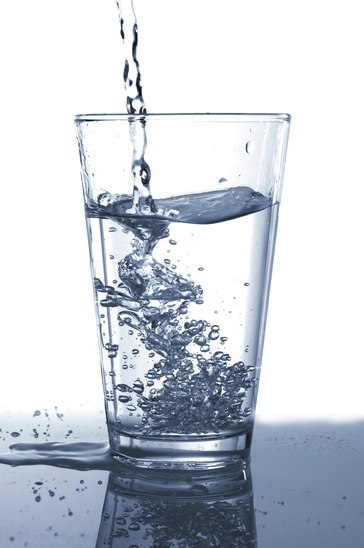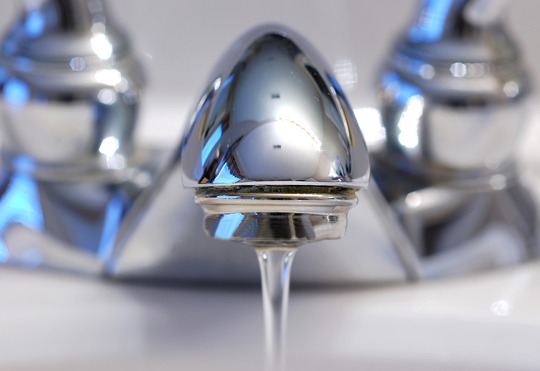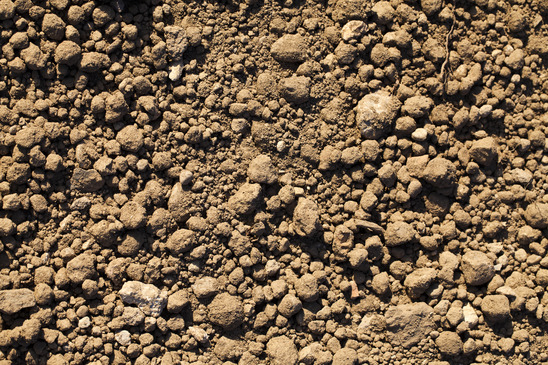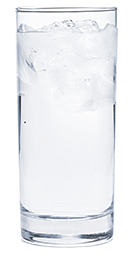Information About Lead in Water

Lead is a common metal found in lead-based paint, air, soil, household dust, food, certain types of pottery, porcelain and pewter, and water. Lead can pose a significant risk to health, as it accumulates in the body over the years and can cause damage to the brain, red blood cells and kidneys. Young children and pregnant women are especially at risk. Amounts of lead that won’t hurt adults can slow down normal mental and physical development of growing bodies.
Lead in Drinking Water
Lead in drinking water, although rarely the single cause of lead poisoning, can significantly increase a person’s total lead exposure, particularly in infants who drink baby formulas and concentrated juices that are mixed with water. The EPA estimates that drinking water can make up to 20% or more of a person’s total exposure to lead.
Lead rarely occurs naturally in water supplies like rivers and lakes. Most often, lead enters drinking water as a result of corrosion or wear of materials containing lead in the water distribution system and household plumbing. These materials include lead-based solder used to join copper pipes, brass and chrome-plated brass faucets. In 1986, Congress banned the use of lead solder containing greater than 0.2% lead and restricted the lead content of pipes and other plumbing material to 8.0%.
Lead reaches the highest concentration in drinking water when the plumbing hasn’t been used for several hours. This means that water was sitting still in the pipes and had time to absorb lead from soldered joints. You can’t taste, see or smell lead in drinking water, which makes it even more dangerous. The only sure way to measure the presence of lead in drinking water is through chemical analysis, which we can help you with at Fountain Valley.

Testing Your Water for Lead
To test your water for lead, you would first need to collect a water sample. This sample should be collected when the lead concentration would be the highest, i.e. after several hours of not using your faucets. Refer to our sample collection instructions for the step-by-step process.
Reducing Exposure To Lead In Drinking Water
Flush your taps before using water for drinking or cooking any time the water in a faucet has gone unused for more than 6 hours. Flushing the tap means running the cold water faucet for at least 30 seconds. Remember that boiling water doesn’t get rid of lead!
Don’t cook with or drink water from the hot water tap. Hot water can dissolve more lead more quickly than cold water. If you need hot water, draw water from the cold water tap and then heat it.
These steps will reduce the lead concentrations in your drinking water. However, if you are still concerned, you may wish to use bottled water for drinking and cooking.

Other Metals
Trace metals are found naturally in soil and water and in the minerals in rock throughout the earth’s crust. Some geographic areas may have levels of certain naturally-occurring metals that have leached from the rocks surrounding water wells that are higher than the Maximum Contaminant Levels. Metals such as Cadmium, Mercury, Chromium, Antimony and Arsenic may be quite toxic at levels above their MCLs. Many of these metals are used in electronics and batteries and may leach from unlined landfills and industrial sites. The form of chromium known as Hexavalent Chromium is particularly toxic. We can specifically test for this metal.
Routine Water Testing Program
The Routine Water Testing Program at Fountain Valley Analytical Lab is an easy and inexpensive way of keeping track of your water quality. If you are interested in learning more about it, simply call us or contact us online with any questions.

 410.848.1014
410.848.1014

